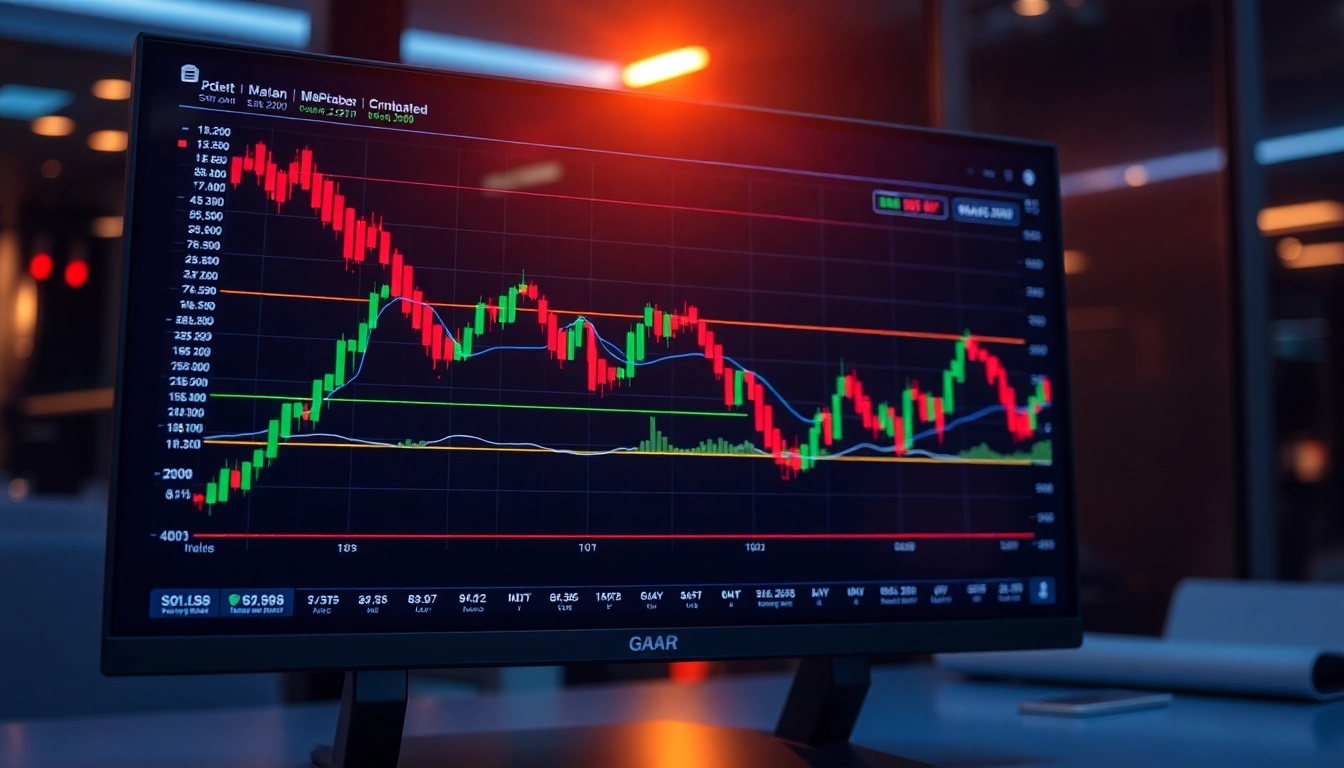Introduction to Trading View and Its Key Features
In the rapidly evolving world of financial markets, access to real-time data, sophisticated analytical tools, and active community engagement are essential for traders and investors aiming for success. Among the most popular platforms that cater to these needs is trading view. Known for its powerful charting capabilities, extensive market coverage, and vibrant social network features, TradingView has revolutionized the way individuals analyze and interact with financial markets. Whether you are a novice exploring trading basics or a seasoned professional executing advanced strategies, understanding how to leverage TradingView’s comprehensive toolkit can significantly enhance your trading efficiency and decision-making process.
Core Tools for Traders and Investors
Dynamic Charting and Technical Indicators
At the heart of TradingView’s appeal are its interactive, customizable charts. Users can access a wide array of chart types—candlestick, line, bar, and more—each aiding in different analytical approaches. The platform supports over 1000 technical indicators and drawing tools, from moving averages and RSI to Fibonacci retracements and Elliott waves, facilitating nuanced analysis. This versatility empowers traders to identify trends, support and resistance levels, and potential reversal points with precision.
Real-Time Data and Market Coverage
TradingView aggregates real-time data across a broad spectrum of asset classes, including stocks, cryptocurrencies, forex, commodities, and indices. This comprehensive data integration allows traders to monitor multiple markets simultaneously, making informed decisions based on current movements. The platform’s ability to stream live prices, coupled with historical data access, enables backtesting and refined strategy development.
Community and Social Features
Beyond its analytical tools, TradingView functions as a vibrant social network. Users can publish trading ideas, comment, and follow top analysts. This community-driven aspect fosters knowledge exchange, peer learning, and validation of trading hypotheses, creating an environment where collective intelligence enhances individual performance.
How to Use Trading View for Effective Trading
Setting Up Customizable Charts and Indicators
Effective trading begins with personalized charts. TradingView allows users to create tailored layouts, save multiple chart configurations, and add preferred indicators for quick access. To optimize your setup, identify the indicators that align with your trading style—whether momentum-based, trend-following, or oscillators—and customize their parameters for clarity. Combining multiple indicators, such as MACD with Bollinger Bands, can provide confirmation signals and improve trade entries and exits.
Creating and Sharing Trading Ideas
TradingView’s social feature encourages users to publish their analyses and trading ideas. Sharing insights with the community not only garners feedback but also exposes traders to diverse perspectives. To craft compelling ideas, accompany charts with clear annotations, explanations of your reasoning, and relevant market news. This collaborative environment accelerates learning and can even lead to mentorship opportunities or collaborative strategies.
Utilizing Alerts and Automated Trading Features
Timely notifications are crucial for capitalizing on market movements. TradingView enables users to set alerts based on price levels, indicator conditions, or drawing tools. These alerts can be delivered via email, SMS, or within the platform, keeping traders informed without constant monitoring. Moreover, TradingView integrates with third-party brokers and supports automated trading scripts through Pine Script, allowing advanced users to automate their strategies with precision and minimal latency.
Advanced Strategies with Trading View
Implementing Technical Analysis and Patterns
Technical analysis is at the core of most TradingView strategies. Traders utilize pattern recognition—such as head and shoulders, double tops/bottoms, triangles, and flags—to forecast future price movements. Combining pattern recognition with indicator signals enhances predictive accuracy. Using TradingView’s drawing tools simplifies marking out these formations, enabling clearer visual analysis.
Backtesting Trading Strategies
Backtesting is vital to validate trading ideas before risking real capital. TradingView’s Pine Script environment allows users to code custom strategies and test them against historical data. This process highlights potential profitability, risk parameters, and drawdown periods, helping traders refine their approaches and develop statistically robust systems.
Integrating Trading View with Other Platforms
For a seamless trading experience, integration with brokerage accounts is essential. TradingView supports linking with select brokers, enabling in-platform order execution. Additionally, traders can export analysis or embed charts into other analytical tools or websites, facilitating a multi-platform approach that leverages the strengths of each environment.
Optimizing Your Trading View Experience for Better Results
Personalizing Watchlists and Layouts
To stay organized amidst multiple markets, traders should customize watchlists with the assets they monitor most. TradingView’s dynamic watchlist feature allows for swift additions, removals, and categorization, ensuring quick access to pertinent data. Custom layouts enable switching between different trading modes—day trading, swing trading, or long-term investing—enhancing focus and productivity.
Managing Market Data and Real-Time Updates
Ensuring data freshness is crucial. Users should verify their data source settings, subscribe to premium plans if necessary, and allocate resources for faster connection speeds. Regularly refreshing your feed and enabling real-time alerts helps prevent missed opportunities and supports timely decision-making.
Analyzing Community Ideas and Insights
Engaging with TradingView’s community ideas offers fresh perspectives and validation for your strategies. Evaluate ideas based on the analyst’s track record, clarity, and reasoning. Critical analysis of others’ insights sharpens your understanding and may inspire modifications to your trading approach, making your overall trading smarter and more adaptive.
Performance Metrics and Best Practices
Tracking Success with Trading View Analytics
Utilize TradingView’s built-in performance charts to monitor your trading performance over time. Analyzing metrics such as win rate, profit factor, and expectancy helps identify strengths and weaknesses. Regular review ensures continuous improvement and adjustment of strategies based on empirical data.
Common Challenges and How to Overcome Them
Common obstacles include information overload, false signals, and emotional trading. Traders should implement disciplined risk management, limit analysis complexity, and avoid impulsive decisions. Utilizing alerts, automated strategies, and predefined plan adhere to systematic trading to mitigate these challenges.
Staying Updated with Platform Updates and Market Trends
Consistently follow TradingView’s updates and market-related news. The platform regularly releases new features, improvements, and integrations that can enhance your trading efficacy. Keeping abreast of market trends through community insights and news feeds enriches your contextual understanding, making your trading more responsive and informed.
